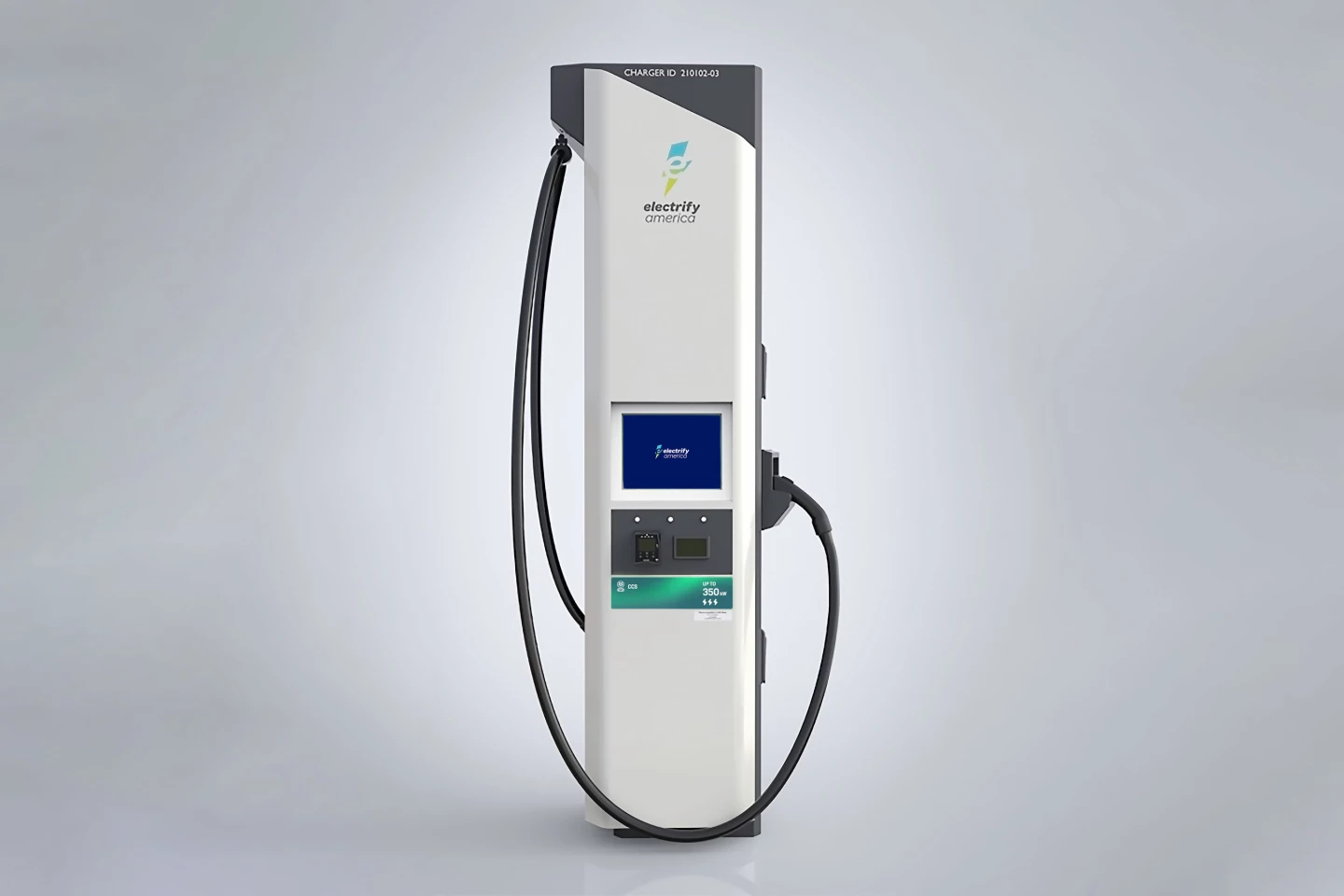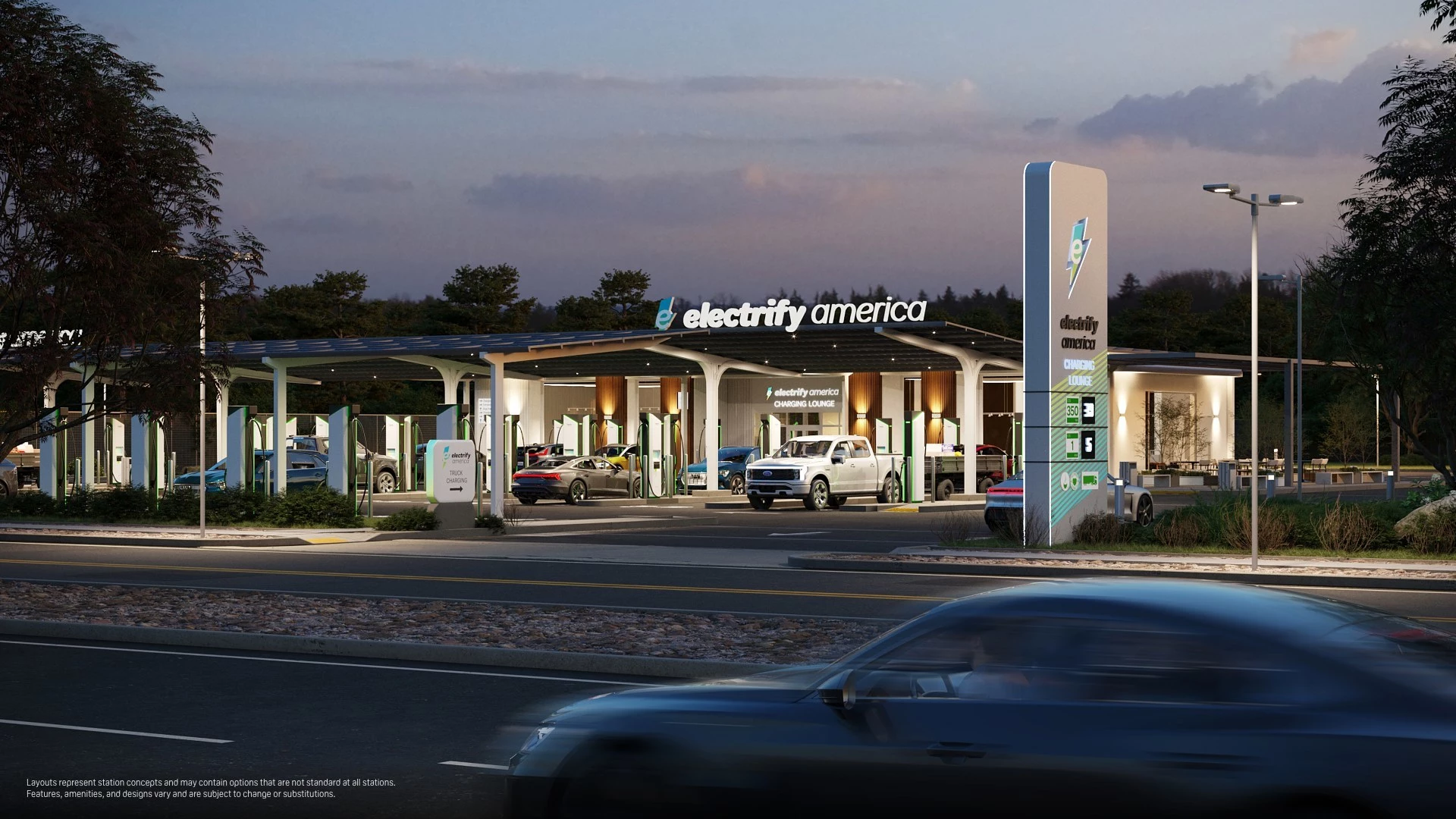VW subsidiary Electrify America is out to offer electric vehicle owners a plethora of locations to charge up their rides, and its next-generation stations should make them more comfortable while doing it. The vision includes customer lounges, solar canopies, and updated displays and cables, as the company continues building out its cross-country network of charging infrastructure.
Electrify America is aiming to install more than 1,800 charging stations across the US and Canada by 2026, and last year we saw the completion of its first-cross country route. Starting in Los Angeles and finishing in Washington DC, the route spans 11 states with the charging stations spaced around 70 miles (112 km) apart, with charging speeds running as high as 350 kW.
These are the speeds offered by Electrify America's ultra-fast DC chargers, which have been given a bit of a facelift as part of the new station design. Upgrades include a brighter and recessed display, a smaller footprint and a new cable management system and single connector cable for a more customer-friendly experience.

As many of 20 of these ultra-fast chargers will feature at some of the new flagship stations, along with solar canopies for shelter and power generation, like some of Tesla's Supercharger stations. These next-generation stations will also feature electric vehicle showcase areas, event spaces, and customer lounges so folks can pass the time in comfort.
Across 2022 and 2023, the company plans to build these stations in Santa Barbara, San Francisco, San Diego and Beverley Hills in California, and in Manhattan and Brooklyn in New York.
“Electrify America will be reinventing the look and feel at many of our charging stations to meet and exceed the expectations of customers moving from a gas-powered vehicle to an electric lifestyle,” said Giovanni Palazzo, president and CEO of Electrify America. “These new designs will help elevate the charging experience for our customers, building on the foundation of our ultra-fast and reliable coast-to-coast network.”
Source: Electrify America





